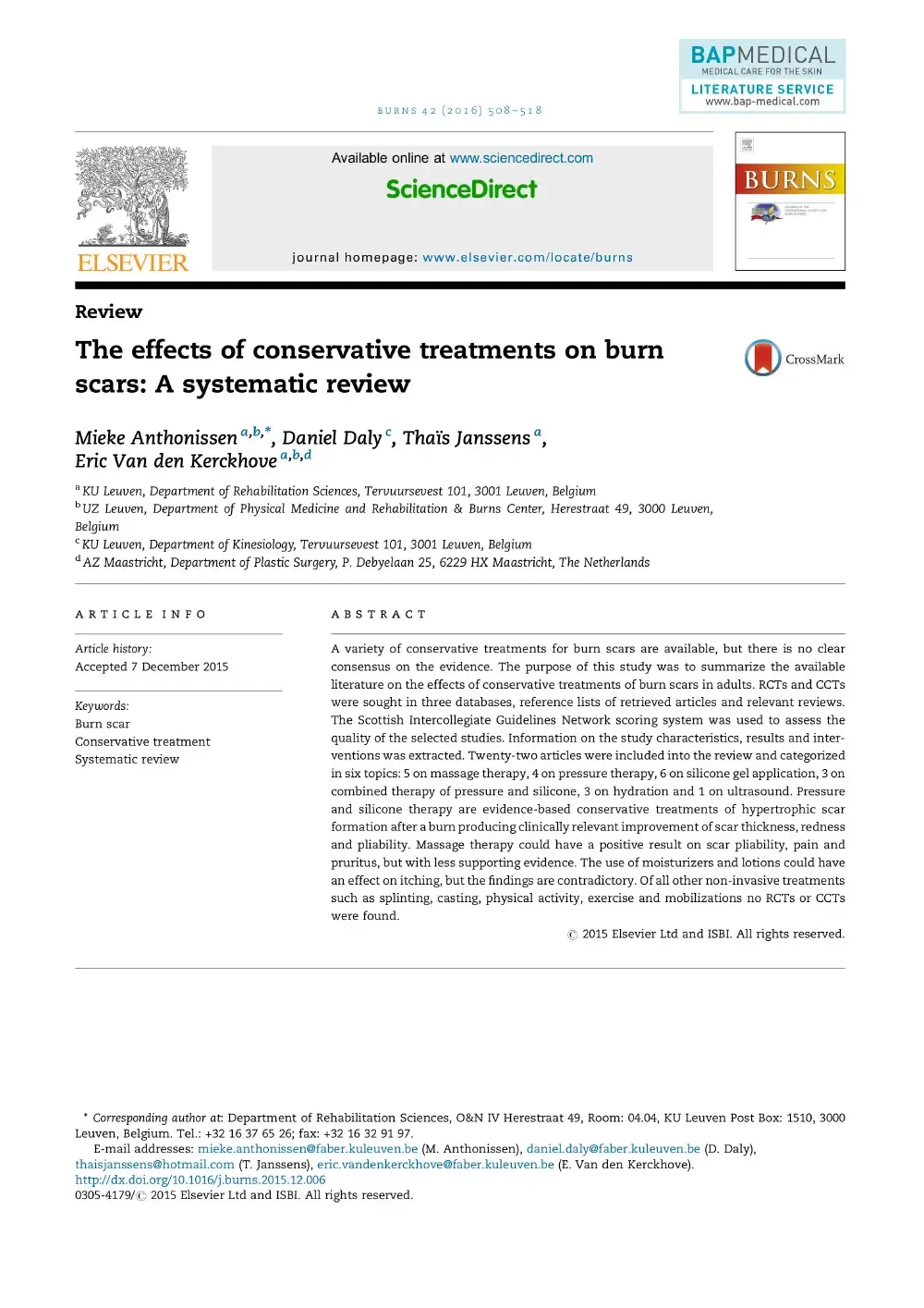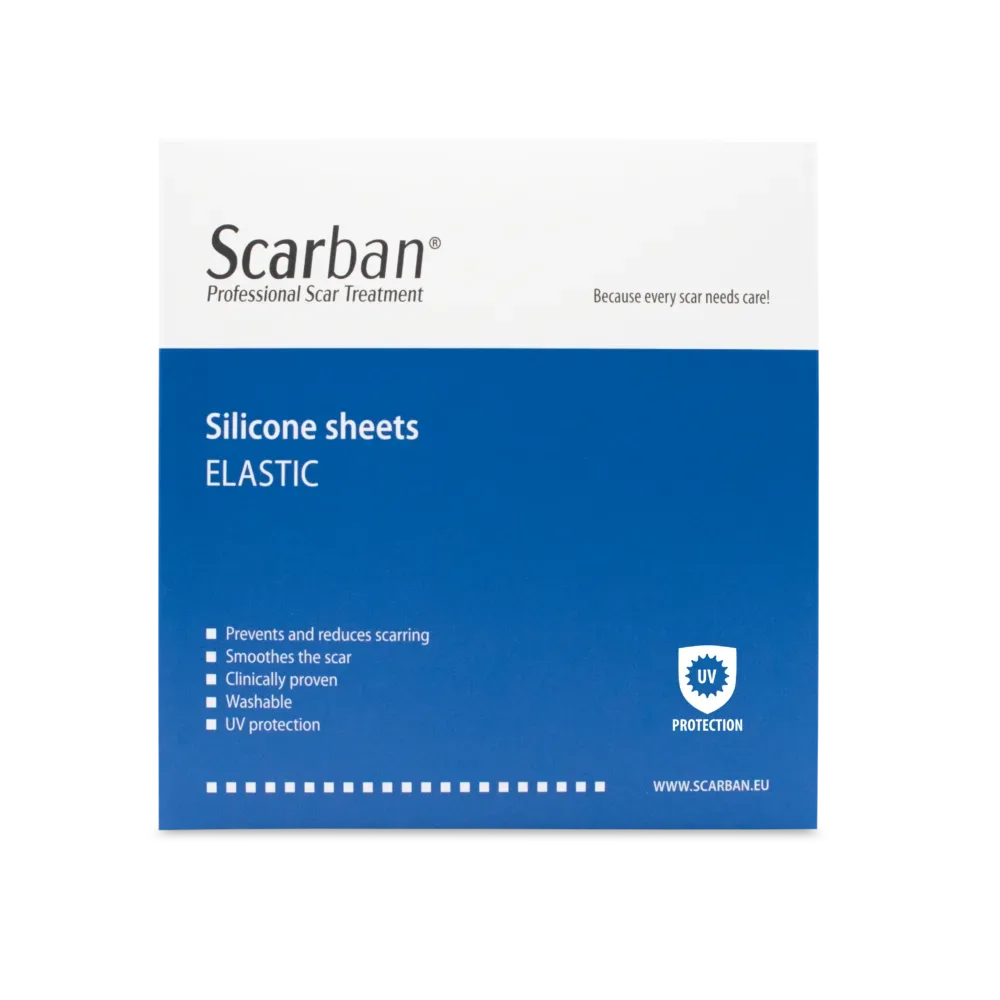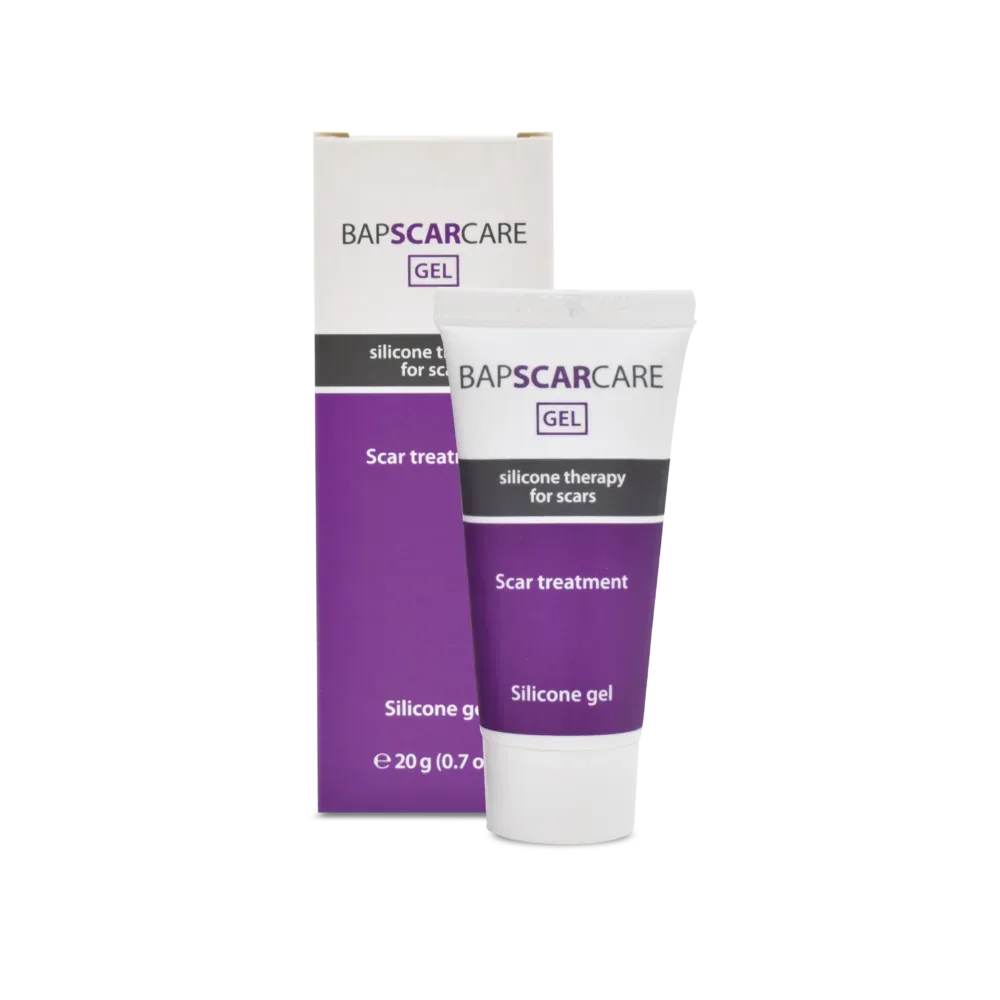The effects of conservative treatments on burn scars | A systematic review
KU Leuven, Department of Rehabilitation Sciences, Tervuursevest 101, 3001 Leuven, Belgium
Abstract
A variety of conservative treatments for burn scars are available, but there is no clear consensus on the evidence. The purpose of this study was to summarize the available literature on the effects of conservative treatments of burn scars in adults. RCTs and CCTs were sought in three databases, reference lists of retrieved articles and relevant reviews. The Scottish Intercollegiate Guidelines Network scoring system was used to assess the quality of the selected studies. Information on the study characteristics, results and interventions was extracted. Twenty-two articles were included into the review and categorized in six topics: 5 on massage therapy, 4 on pressure therapy, 6 on silicone gel application, 3 on combined therapy of pressure and silicone, 3 on hydration and 1 on ultrasound. Pressure and silicone therapy are evidence-based conservative treatments of hypertrophic scar formation after a burn producing clinically relevant improvement of scar thickness, redness and pliability. Massage therapy could have a positive result on scar pliability, pain and pruritus, but with less supporting evidence. The use of moisturizers and lotions could have an effect on itching, but the findings are contradictory. Of all other non-invasive treatments such as splinting, casting, physical activity, exercise and mobilizations no RCTs or CCTs were found.
Introduction
In the past severe burns were associated with considerable mortality rates [1]. Since the development of specialized burn centers and associated advances in treatment, more burn victims survive [1], [2], [3]. Due to long hospitalization and absence of daily physical activity and exercise, patients suffer from decreased muscle strength, reduced joint mobility and limited fitness level. Moreover, the formation of hypertrophic scars, even after minor burns, is a common complication and usually develops 6–8 weeks after re-epithelialization. These scars have a red to deep purple color and become more elevated, firm, hypersensitive, itchy, warm to touch, tend to contract and affect range of motion [4]. Subsequently, physiotherapy takes a crucial role in the acute treatment and rehabilitation process of burn patients and includes a variety of treatment methods such as exercise therapy, cardiopulmonary training, joint mobilization, positioning, splinting and topical scar management. However there is no consensus on the actual effect of the various treatment modalities and the evidence is not clear or even lacking. Therefore the purpose of this study was to summarize the available literature on the effects of conservative treatments of burn scars in adults.
Section snippets
Search strategy
Studies were sought in three databases PubMed, Embase and Web of Science. Full text articles on conservative treatments, such as pressure therapy, silicone gels, massage therapy, use of moisturizers, rehabilitation, physical activity, exercising, splinting, stretching and mobilization on burn scars in a population of adults were included. Inclusion criteria for the review involved a patient population of adults with burn scars and a conservative treatment intervention. The latest search data
Trial flow
Via PubMed 1224 articles were identified. Of these publications, 1181 were excluded with limits activated for language, species, age and study design. Forty-three articles were screened on title and abstract, whereof 23 were excluded for not meeting the inclusion criteria (patient population, treatment intervention and outcome measures). Twenty articles were retrieved. Additional search using Embase led to one extra article. A search on Web of Science did not deliver additional studies. Another
Massage therapy
A reduction of pain and/or itching was shown in 3 of 5 studies [5], [17], [21]. Improvement of patient's perspectives on scar related characteristics was only found in the study of Roh and co-authors of 2007, but these findings were not confirmed by Roh and coworkers in 2010, even though in the latter study the frequency of massage treatment was three times higher than the study of 2007, nonetheless the sample size was smaller, only two thirds of the sample size of Roh et al. in 2007 [12], [21]
Conclusion
Pressure and silicone therapy are the most popular and evidence-based conservative treatments of hypertrophic scar formation after a burn [32]. Pressure or compression therapy improves scar thickness and probably decreases scar redness. Silicone therapy showed positive effects on scar pliability and redness. Massage therapy could have a positive effect on scar pliability, pain and pruritus, but with less supported evidence [32]. The use of moisturizers and lotions are popular well-known
Keywords: Burn scar; Conservative treatment; Systematic review.
Copyright © 2015 Elsevier Ltd and ISBI. All rights reserved.



